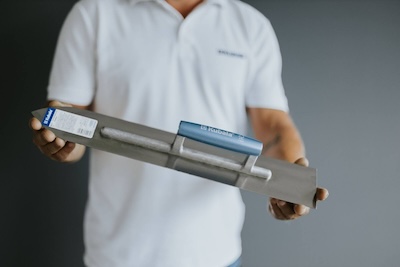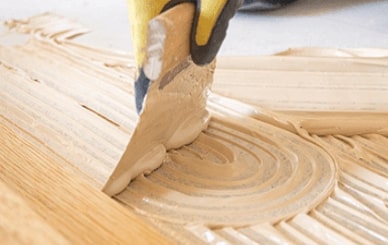Choosing A Flooring Trowel For Your Project
15/05/2024
Choosing the right trowel for your flooring project is crucial to ensure a professional finish and long-lasting results. Selecting the appropriate flooring trowel size can significantly impact the outcome of your project. In this guide, we’ll explore the various types of flooring trowels available on the market, and how to use a floor adhesive trowel.
Understanding Flooring Trowels
Flooring trowels are essential tools for spreading adhesives evenly over your subfloor, ensuring that your tiles adhere correctly and remain in place for years to come. The key to selecting the right trowel for spreading adhesive lies in the size and type of notches, which determine the amount of adhesive applied.
At Flooring Materials, we are proud to offer a wide range of high-quality flooring trowels from some of the most trusted brands in the industry. Our selection of trowels includes products from Ardex, Kubala, Perfect Level Master, Genesis, and more.
Types of Flooring Trowels
A lot of the trowels have cross-over uses for different parts of the flooring process such as the Kubala Extra Large Stainless Steel Plastering/Self Levelling Trowel. Here are three key types of flooring trowels:
-
Floor Adhesive Trowel
- Designed specifically for applying adhesive.
- Comes in various notch sizes and shapes to control adhesive spread.
- Example: Roberts Adhesive Spreader
-
Plastering Trowel
- Used for positioning and securing tiles.
- Ensures an even spread of adhesive under each tile.
- Example: Kubala Stainless Steel Soft Grip Smoothing/Plastering Trowel
-
Floor Levelling Trowel
- Ideal for levelling out the adhesive layer.
- Helps in achieving a smooth, even surface before laying tiles.
- Example: RST Wooden Handle Flooring Trowel
-
Putty Knife/Finishing Trowel
- For tile edges adhesive clean up.
- Light, durable and ergonomically designed.
- Example: Perfect Level Master Edge Trowel Putty Knife
You can also shop our range of self levelling tools that are essential for achieving a level surface before laying flooring finishes, and our range includes everything you need for the job; from self-levelling compounds to spiked rollers.
Read more: How To Level A Floor: A Step-by-Step Guide
How to Use a Floor Adhesive Trowel: 5 Steps

A floor adhesive trowel is a very handy addition to your collection of flooring tools and accessories. Before you begin applying floor adhesive you should consider that the size of the trowel used determines the amount of floor adhesive that is applied. Using a flooring trowel that is too small will result in insufficient adhesive coverage, leading to your coverings not adhering properly which could potentially lead to cracking or lifting over time. Conversely, a trowel that is too large may cause excessive adhesive to ooze out from under the tiles, creating a mess and uneven surface.
With this in mind, here’s a short, 5-step how-to guide on using an adhesive trowel:
- Prepare the Subfloor: Ensure the subfloor is clean, dry, and level. From Floor Primers and Repair Mortars to moisture barriers such as Damp Proof Membranes (DPM), we have carefully curated our floor preparation inventory to meet the diverse needs of all
- Apply the Adhesive: Using the correct size flooring trowel, spread the adhesive over a small section of the subfloor.
- Create Ridges: Hold the trowel at a 45-degree angle to create even ridges in the adhesive.
- Lay the Covering: Press the flooring firmly into place, ensuring full contact with the adhesive.
Tips for Using a Flooring Trowel
- Smooth Application: Use a good quality trowel to ensure the adhesive layer is even before laying the tiles.
- Consistent Pressure: Apply consistent pressure when spreading the tile adhesive to maintain an even layer.
- Proper Angle: Hold the trowel at a consistent angle (usually 45 degrees) to ensure even distribution of adhesive or mortar.
- Consistent Pressure: Apply even pressure to avoid creating uneven surfaces. Whilst laying a floor, knee pads are essential for protecting your knees during long hours of work.
- Clean Regularly: Keep the trowel clean to prevent dried adhesive or mortar from affecting the application process.
- Correct Trowel Size: Always check the manufacturer's recommendation and what the correct trowel size is.
At Flooring Materials, we understand the importance of knowing the different types of flooring trowels and their uses, so you can experience a smooth and successful tile installation. If you can't find what you're looking for on the website please do not hesitate to get in touch with our team on 01604 915243 or email your queries to [email protected], and we can help you with all of your flooring needs.

